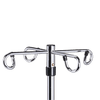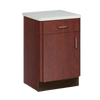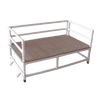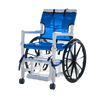Helpful Articles

A Guide to Recognize Skin Cancer Signs 0
Embarking on the path of aging comes with wisdom and the need for extra care, especially when it comes to our skin. In this blog post, we'll shed light on recognizing the signs of skin cancer and equipping seniors with essential knowledge to safeguard their skin health. Join us in this exploration of skin awareness and learn how to identify potential concerns for a healthier and protected life.- Dansons Medical Support

Debunking Elderly Nutrition Myths 0
Navigating the vast landscape of nutrition can be challenging, especially as we age. In this blog post, we'll unravel common myths surrounding elderly nutrition, providing seniors with clear guidance to ensure a healthier and more vibrant life. Join us on this journey to separate fact from fiction and make informed choices for your well-being.- Dansons Medical Support

A Guide to Proper Bedding and Positioning for Seniors 0
As we gracefully age, the importance of a good night's sleep cannot be overstated. In this blog post, we'll delve into the world of proper bedding and positioning, unveiling the secrets to preventing pressure ulcers and ensuring seniors enjoy restful nights. Join us on this journey to discover the key to a more comfortable and vibrant life!- Dansons Medical Support

Gut Healthy Foods for Seniors 0
Maintaining a healthy gut becomes increasingly crucial as we age, as it plays a vital role in overall well-being and immune function. In this blog post, we will highlight a range of gut-healthy foods that are easy to incorporate into a senior's diet. Join us in exploring the power of digestion-friendly foods that can help seniors optimize their gut health and enjoy a vibrant and comfortable life!
- Dansons Medical Support


 Lifts
Lifts
 Patient Lifts
Patient Lifts
 Stand Assists
Stand Assists
 Standing Aids
Standing Aids
 Slings
Slings
 Parts & Accessories
Parts & Accessories
 Wheelchairs
Wheelchairs
 Ergonomic
Ergonomic
 Portable
Portable
 Reclining
Reclining
 Standing
Standing
 Sporting
Sporting
 Bariatric
Bariatric
 Ramps
Ramps
 Modular
Modular
 Portable
Portable
 Parts & Accessories
Parts & Accessories
 Walking Aids
Walking Aids
 Rollator Walkers
Rollator Walkers
 Canes
Canes
 Crutches
Crutches
 Parts & Accessories
Parts & Accessories
 Scooters
Scooters
 4-Wheel
4-Wheel
 Folding
Folding
 Parts & Accessories
Parts & Accessories
 Nursing
Nursing
 Pregnancy Comfort
Pregnancy Comfort
 Self-Care
Self-Care
 Pump Parts
Pump Parts
 Exercise Equipment
Exercise Equipment
 Treadmills
Treadmills
 Walking Pads
Walking Pads
 Rowing Machines
Rowing Machines
 Strength & Conditioning
Strength & Conditioning
 Massage Chairs
Massage Chairs
 Saunas
Saunas
 Hot & Cold Tubs
Hot & Cold Tubs
 Stethoscopes
Stethoscopes
 Surgical Instruments
Surgical Instruments
 Forceps
Forceps
 Scalpels
Scalpels
 IV Poles
IV Poles
 Oxygen
Oxygen
 Beds
Beds
 Electric Beds
Electric Beds
 Standing Beds
Standing Beds
 Mattresses
Mattresses
 Bed Accessories
Bed Accessories
 Bed Parts
Bed Parts
 Chairs
Chairs
 Medical Recliners
Medical Recliners
 Phlebotomy Chairs
Phlebotomy Chairs
 Stools & Task Chairs
Stools & Task Chairs
 Parts & Accessories
Parts & Accessories
 Tables
Tables
 Overbed Tables
Overbed Tables
 Medical Tables
Medical Tables
 Recovery Couches
Recovery Couches
 Cabinets
Cabinets
 Pool
Pool
 Pool Lifts
Pool Lifts
 Pool Fitness & Therapy
Pool Fitness & Therapy
 Pool Access Chairs
Pool Access Chairs
 Slings
Slings
 Parts & Accessories
Parts & Accessories
 Bath
Bath
 Toileting Aids
Toileting Aids
 Bath Lifts
Bath Lifts
 Shower Seats
Shower Seats
 Parts & Accessories
Parts & Accessories
 Portable Shower
Portable Shower
 Dansons Products
Dansons Products
 Transfer Aids
Transfer Aids
 Cushions
Cushions
 eBooks
eBooks
 Helpful Articles
Helpful Articles
 Reviews
Reviews
 Contact Us
Contact Us
 Create Account
Create Account
 Request a Quote
Request a Quote
